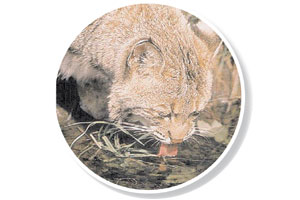As we know, all ecosystems are made up living and non-living factors and the interaction of both of them allows the permanence in time of a system that must be in balance at all times.
Although both elements are modifiable, it is generally the living organisms that have to adapt to the environment they live in, at times overcoming adverse conditions, like climate or the amount and type of food (and water) available.
Within any species, each individual has specific characteristics and aptitudes. There will always be some with better tools to adapt to the surrounding environment; some traits will be more useful than others and will have more possibilities of surviving and genetically passing them on to their offspring.
A series of environmental demands that are directly related to the anatomy, functioning and specialization of the organisms that inhabit an ecosystem.
Organic temperature
For all living organisms it is of vital importance to regulate body temperature. It is considered a vital process because a great part of vegetable and animal metabolism can find itself inhibited or altered by abrupt thermal changes.
When we speak of thermoregulation, we refer to the capability of some living beings to control their body temperature. For plants, all adaptations occur at a cellular level, guarding, above all, the organisms’ photosynthetic capabilities. It has been proven that the performance in processing solar energy varies between one vegetable species and another, there are even some adaptations that enable plants that inhabit cold environments to synthesize compounds specialized in cellular protection.
As for animals, homeotherms (those capable of regulating their body temperature) have a series of physiological responses that ease thermal leveling. These organisms, considering environment and body temperature, generate voluntary and involuntary responses like perspiration and trembling.
Even those animals that do not have sweat glands develop special mechanisms to eliminate the excess of heat from their bodies. An example of this is the panting of dogs, process through which they rapidly inhale small amounts of air into their lungs, which produces the evaporation of the heat contained in the respiratory ways and great amounts of saliva from the surface of the mouth and tongue.
Consumption of water
For all living beings it is fundamental to consume water. Although a great part of living organisms’ bodies are made up of this vital element, it is necessary to counter the losses or accumulations through specific processes. Easily, living beings can drink it or extract it from certain foods, as in the case of animals, or absorb it, as it happens with plants.
However, there are more complex mechanisms for maintaining the balance of water. In the case of plants, the opening or closing of stomas (pores located in the surface of leaves), which enables the increase or reduction of water loss through perspiration.
In animals, the presence and activation of the excretory system enables not only the elimination of some waste, but also the balance of the amount of body water through the balance of salts.








 Hundimiento del Titanic
Hundimiento del Titanic